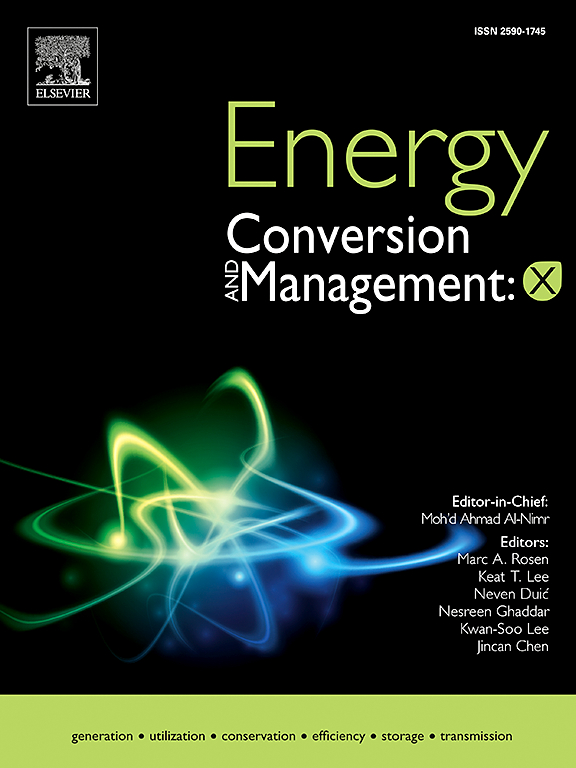自然对流液体浸没冷却条件下锂离子电池电化学-热数值模型
IF 7.6
Q1 ENERGY & FUELS
引用次数: 0
摘要
本研究以26650 LiFePO4圆柱电池为研究对象,对直接接触液浸冷却作为电池热管理方法的适用性进行了数值研究。通过实现Newman伪二维模型,可以复制电池的内部电化学行为,同时还可以模拟液体域,以捕获电池在充放电速率为4C时的传热。由于电池表面自然对流引起的强烈流体搅拌,电池在充电和放电过程中的平均表面温度分别限制在294.6 K和300 K的最大值。在电极末端,由于其较小的表面积和沿电池垂直轴的高导热性,对流热通量显著升高。较差的径向导热系数导致了明显的堆芯-表面温差,在充放电时分别达到2.5 K和6.8 K。这些热梯度与细胞的加速降解有关。本文章由计算机程序翻译,如有差异,请以英文原文为准。
Electrochemical-thermal numerical model of a lithium-ion battery under natural convection liquid immersion cooling conditions
The suitability of direct contact liquid immersion cooling as a method of battery thermal management is investigated numerically in this study, where a 26650 LiFePO4 cylindrical cell is subjected to natural convection liquid immersion conditions. The internal electrochemical behaviour of the cell is replicated through the implementation of the Newman pseudo two-dimensional model, while the liquid domain is also simulated to capture the heat transfer from the cell during both charging and discharging at a rate of 4C. The average surface temperature of the cell is limited to maximums of 294.6 K and 300 K during charging and discharging respectively as a result of the strong fluid agitation induced by natural convection from its surface. The convective heat flux is significantly elevated at the electrode terminals due to their smaller surface area and the higher thermal conductivity along the cell’s vertical axis. The poor radial thermal conductivity contributes to the establishment of notable core-to-surface temperature differences, reaching 2.5 K and 6.8 K during charging and discharging respectively. These thermal gradients are of concern with regard to accelerated degradation of the cell.
求助全文
通过发布文献求助,成功后即可免费获取论文全文。
去求助
来源期刊

Energy Conversion and Management-X
Multiple-
CiteScore
8.80
自引率
3.20%
发文量
180
审稿时长
58 days
期刊介绍:
Energy Conversion and Management: X is the open access extension of the reputable journal Energy Conversion and Management, serving as a platform for interdisciplinary research on a wide array of critical energy subjects. The journal is dedicated to publishing original contributions and in-depth technical review articles that present groundbreaking research on topics spanning energy generation, utilization, conversion, storage, transmission, conservation, management, and sustainability.
The scope of Energy Conversion and Management: X encompasses various forms of energy, including mechanical, thermal, nuclear, chemical, electromagnetic, magnetic, and electric energy. It addresses all known energy resources, highlighting both conventional sources like fossil fuels and nuclear power, as well as renewable resources such as solar, biomass, hydro, wind, geothermal, and ocean energy.
 求助内容:
求助内容: 应助结果提醒方式:
应助结果提醒方式:


